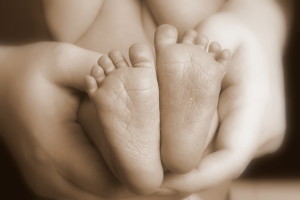

- Call 908 543 4390
- Email
- Dr.Joni Redlich PT,DPT


There are so many reasons why the Spider Cage is a powerful therapeutic tool to integrate into your child’s physical therapy program. If you worry about your child not having all possible opportunities to develop new movement skills, you should try out the Spider Cage during a trial session at our office to see firsthand what your child can do!
Why is the Spider Cage so powerful? Let’s look at 7 reasons that the Spider Cage gives children access to developing new skills and abilities, by supporting them to increase strength, balance, motor control, endurance and sensory processing, all while having sooooo much fun. Remember, fun is really important when it comes to children- if they’re having fun, then they’re LEARNING! Let’s get into those 7 reasons now.
The Spider Cage is setup where the child wears a belt and the bungees connect to the belt. There are 8 bungees that can be attached to the belt with 2 on each corner.The child can be sitting, on hands and knees, standing, walking on a treadmill or moving between positions. The bungees in the Spider Cage provide support, but they’re also dynamic, so it is a different experience for a child that has been in a stander or a gait trainer. It is also different than having a parent or therapist helping. The child can try out new skills with just enough assist, but they are initiating the movement and responding to what worked and what didn’t work to learn from the experience.
In the video below, you can see the boy practicing standing up by himself without using his hands, which he can’t do outside of the Spider Cage. Over time the bungees can be lowered or only 4 bungees can be used to build more independence, which can then generalize to outside of the Spider Cage.
2. Confidence Building
Many children with movement delays or disabilities develop a learned helplessness from frequently experiencing things being difficult or impossible. Learned helplessness is when you have learned that you can’t do something, so you stop trying. It is an understandable reaction, but one we have to mindful of when guiding children to develop new skills and abilities. The Spider Cage is a fantastic tool for children to experience that they are capable of doing, with just the right support. This can be basic gross motor skills like sitting, standing and walking, or it can be more advanced skills, like hopping and balancing on dynamic surfaces.
The boy in the video initially needed hands on help to perform this motion. He didn’t try to initiate it on his own and needed help to complete the motion. After several times in the Spider Cage, he learned how to transition from hands and knees to standing with the help of the bungees alone. He was so proud of himself and this transferred to him helping more with transitions off the floor outside of the Spider Cage.
3. Safety to Try Higher Level Balance Skills
Children will limit attempts at new skills if they know their body isn’t going to be able to do it reliably and safely. Knowing they can’t fall, the Spider Cage gives the opportunity to try all sorts of challenging balance tasks without the risk of falling and hurting yourself. This way, the kids can work on those advanced skills, flood their brains with novelty and develop more advanced movement control.
In the video below, she challenges herself to move from standing to half kneel while standing on a bolster that rolls side to side. What a challenging task! This would be a risky thing to try holding maybe a trapeze overhead and would have allowed her to rely mostly on her arms, instead of her hips. Doing this activity in the Spider Cage let her work on a high level of hip and balance control and no rely on her arms for help.
4. Sensational Sensations
As we said before, the Spider Cage is a DYNAMIC place to be! The bungees provide resistance and assist to movement, giving intense proprioceptive/deep pressure input to the children’s bodies. All of the movement is very stimulating to the vestibular system in the inner ear as well. The Spider Cage is a great place to put together the postural system with the eyes, vestibular (inner ear), and proprioceptive (information from joints and muscles) to work on improving body awareness and regulation skills.
In this video you will see a boy doing intense jumping, having a BLAST, and regulating his system to do focussed work afterwards!
5. Hands Free Movement
Children who use crutches or walkers for mobility are always using their hands to help manage the rest of their bodies. The problem is that they then become limited in using their hands for other activities, such as carrying something, and they rely on using their arms to initiate movement, rather than using the pelvis, the cornerstone and powerhouse of our bodies.
In this video you’ll se a boy playing basketball where he typically needs a person to help or his hands on an assistive device to be able to do an activity like this.
6. Speed & Power
The Spider Cage gives the support a child needs to be able to work on moving at increased speeds than they could do outside of the cage. It also lets them work on their power with jumping and leaping. The dynamic assist on the bungees give greater access to new skills while decreasing risk of falls at the same time. This allows motor control, strength and endurance to build to support the use of increased power and speed outside of the cage in the future.
In this video, the boy walks 2mph, when he usually walks at a slow pace with crutches, he’s able to explore increased speed. You can see how proud he is at his acomplishment!
7. Play
Play is how babies and children learn! Play in the Spider Cage gives access to children with a limited play repertoire to develop more advanced play skills. Children can jump, kick a ball, throw a ball, and knock down towers. There are so many games children with limited play skills can try out in the Spider Cage!
In the first video below, the boy initially needed assistance from the therapist to stop on the target. With practice he was doing it all on his own and laughing so hard each time!
In the second video, we used the Spider Cage in a completely different way to make a ninja obstacle course with the bungees! The boy is working on his midrange postural control to move over and under while trying not to touch the bungees.
In the 3rd video the boy is playing t-ball! He has the opportunity to be hands free using the support of the bungees to play the game!
 So many children participate in recreational fall and spring soccer teams. It’s a fun intro to the game and usually results in the little kids running in large groups up and down the field!
So many children participate in recreational fall and spring soccer teams. It’s a fun intro to the game and usually results in the little kids running in large groups up and down the field!
Soccer can be a fun experience for many children, but it can be frustrating for others. When children struggle with running as fast as their peers or following the rules of the game, the fun can be lost. This leaves parents wondering whether they should even have signed up their child at all.
Why do some children struggle with soccer? We can look at several different possible reasons to try to understand.
Can the child run fast enough? If the child can’t keep up their teammates, soccer can be an exercise in frustration. Why bother trying when you’re not having success!
Can the child stand on one leg for longer enough to kick the ball? If the child feels like they’re going to fall over, kicking is no fun anymore!
Can the child listen, look, and move at the same time? For some children, using more than one sense and moving at the same time is just too much! (Think rubbing your belly and tapping your head at the same time.)
The younger we can help children find success in a movement activity the better. Soccer may not be the best fit for your child, but they also may need some extra help to get their bodies ready to successfully participate in soccer or other recreational activities.

The goal of any extra help is to get the child out participating with friends and family to do the things they love! It is also so helpful to do so at a young age, before a child’s confidence is impacted.
Many parents will seek out extra support when their children are around 5 years old, which is perfect. The same movement skills that need to be developed for soccer and other recreational activities are the ones that will support the child in the classroom too! So its success all around!
Have you heard the term “crossing midline”? It is one of those phrases thrown around a lot from pediatric physical and occupational therapists. We will often tell parents that their child needs to practice crossing the midline.
So what is it???
The midline is the center of your body. In this instance, we’re talking about splitting the left and right sides of the body.
When one arm crosses over to the other side, whether to write a sentence or reach for a toy, this is called “crossing the midline.”


When children have difficulty crossing midline, they might pass a pencil between hands instead of writing a full line with one hand.
The child may have difficulty putting their socks and shoes on.

Another child might often sit in a W- position because it takes crossing midline to get in and out of other positions.
If your child has difficulty crossing midline, it is often recommended to practice this skill. Before you do, check out the video below to learn the #1 Secret to Crossing the Midline!
If your child does need more practice, there are many fantastic activities, dances and games you can try!
Here are a few awesome resources to check out:

There are many benefits a parent can gain from spending some time together with a pediatric PT and their baby. Put down a blanket and relax on the floor with baby, while exploring various topics with an expert. We know how difficult it can be to get out of the house with a baby, so we also offer home visits! These visits can cover many topics, such as:

 Some children have a preference to look in one direction or tilt their head to one side.
Some children have a preference to look in one direction or tilt their head to one side.
Learn how the whole body is connected and affecting how baby holds their head and turns to look around. Learn how you can improve it with our cuddle-friendly pain-free approach!
PTs can help you and your baby stay healthy and active throughout your lives. Give us a call at 908-543-4390 or message us at info@kidpt.com to schedule a visit.
When a new baby comes, the house often becomes overrun with supplies and over the first year things for baby seem to multiply and take over! All of these things for baby can be expensive. What if you could save money AND best promote your child’s development?!
Young b abies spend their days cycling between eat, sleep and poop. Between bottles or nursing, diaper blow outs and diaper changes and precious nap time, there isn’t a ton of play time. There are small intervals throughout the day that get longer as the baby gets older and begins sleeping less, feeding less often, and becoming more alert and mobile.
abies spend their days cycling between eat, sleep and poop. Between bottles or nursing, diaper blow outs and diaper changes and precious nap time, there isn’t a ton of play time. There are small intervals throughout the day that get longer as the baby gets older and begins sleeping less, feeding less often, and becoming more alert and mobile.
During those happy alert times there are many options to entertain baby: bouncers, exercausers, jumpers, swings, etc.
What is the best option for baby’s development? What is the best way for the explore their new exciting world?
My advice is to keep it simple. There is no need to spend so much money on various pieces of baby equipment.
The best place for a baby to explore is on a blanket or a play mat. Provide opportunities to look at different things and touch different textures. Instead of rotating between baby equipment, try rotating toys instead.
Concerned about safety with pets or older siblings? Look into a play yard or an old fashioned play pen (larger than the modern pack n play).
Babies learn how to use their eyes, ears, mouths and hands by actively turning their heads in response to sights and sounds. They learn how to control their bodies to move to something they want with practice and experience. This needs to happen out of a semi-reclined position, that babies often spend a lot of time in, between car seats, swings and bouncers.
Many people will say that their kids are happier when upright in exercausers or jumperoos. There is no denying that many babies enjoy it and for 15 minutes a day while you take a quick shower or need to get something done in the house, that’s ok. I simply recommend limiting use, not banning these baby devices if it makes a difference for the parent.
Allow your baby to move their bodies in the ways they are ready. They grow so quickly and will be up and running before you know it. Until then, let them explore and learn how to control their bodies against gravity one step at a time. This will maximize your child’s development from sensory processing to gross motor abilities, and in the end could even save you some money!
Last night my daughters were watching their favorite show, Doc McStuffins. If you haven’t seen it, its an adorable show about a little girl who is a doctor for toys. Its filled with funny little diagnoses that go in the Big Book of Boo Boos and fun little songs filled with life lessons on caring for yourself and others. Read more
As a mom of two girls and a PT for kids I often get asked about milestones and whether a parent should be concerned. There are many clues to whether a parent should be concerned that go beyond looking at a chart that tells you when a child typically will develop a skill. Read more
Most posts on this blog are related to children with special needs. However, I would like to share a great product invented by a fellow pediatric physical therapist called Magic Merlin’s Magic Sleep Suit. Above you can watch a demonstration of an adorable little baby trying it on.
I recently bought one for my 4 month old to help with our transition to the crib and out of the swaddle. It is a big puffy suit with open hands and feet. Its heavy and stiff enough to stop those startles that open wake up baby, but flexible enough for baby to suck on his fingers or wiggle around to self soothe. Read more
What does torticollis look like? A child will tilt their ear towards the shoulder and will turn to the opposite direction. A child with left torticollis will tilt their head to the left and prefer to look to the right. A child with right torticollis will tilt their head to the right and prefer to […]
I am asked about flat feet all the time. I’ve even gotten our OTs in the habit of looking at their client’s feet. Over and over again parents take their child to the orthopedic surgeon and ask about orthotics for their child’s flat feet. Each time the physician says no. The orthotic will not change anything. You are wasting your money. Flat feet don’t cause pain. My orthopedic books all say the same thing. Read more
